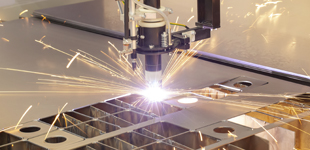Boring, as it is used in machining operations, is the process of creating a larger hole from a smaller hole. This can be a very substantial enlargement down a long, thick workpiece or it can be a very fine, narrow bore create in a small workpiece.
Boring can be used to create a uniform, even hole down the center or off-center of a workpiece, or it can also be used to create a tapered or conical shape on the interior of the piece. While this may seem like a simple process, it is actually very complex, and the boring operation has to be correctly configured into the CNC machine to create the desired hole to the exact specifications required.
The Equipment
Depending on the exacting precision and specifications required for the part or component, the boring operation can be completed on CNC milling machines or machining centers, which are computer controlled for precision boring. It is also a process that can be done on manually operated lathes or turning centers.
It is possible to complete the boring operation in a vertical position or in a horizontal position. The size and the complexity of the part, as well as the equipment available based on other machining needs for the part, are all factors in equipment selection.
In most types of boring, the tool used is a single point cutting tool. It can be of various sizes and may be designed differently to create the various uniform conical or tapered holes. There is even the option to develop an eccentric hole, which is not uniform and symmetrical in its design.
The choice of boring as opposed to drilling is important. Boring results in a precision hole and is often used to correct any deviance from the required tolerances after drilling is completed. It can also be used as the primary machining option to create a uniform hole in parts and components of all sizes.









